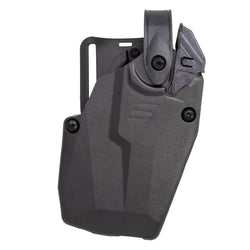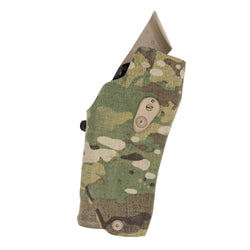I still remember the first time I stepped onto the line at a local match.
My heart was racing, my mouth was dry, and my hands were shaking—not from fear, but from pure adrenaline. That was my gateway into competitive shooting, and I’ve been hooked ever since.

As an Olympian in the sport of biathlon, I’ve spent most of my life combining cardio with precision rifle shooting under stress. But it wasn’t until I transitioned into action shooting—USPSA, Steel Challenge, and 3-Gun—that I realized how valuable competition is, not just for sport, but for life.
Whether you’re a law enforcement officer, a concealed carrier, a hunter, or just someone who wants to shoot better under pressure, competition will make you faster, safer, and more confident. Here’s how to get started.
Step 1: Find Your “Why”
Before you jump into gear lists and drills, ask yourself why you want to compete.
Are you a hunter looking to improve your shot placement under pressure? A first responder who wants to refine weapon handling? Or maybe you’re just competitive by nature and love the challenge.
For me, it was the drive to push myself further. After years of Olympic-level training, I wanted to see how far I could take my skills with a pistol, rifle, or shotgun. It wasn’t about medals at this point—it was about mastery.
Step 2: Choose a Discipline
There are dozens of shooting sports, and the best one for you depends on your interests and goals.
- USPSA (United States Practical Shooting Association) – Fast-paced pistol shooting with movement and stage planning. Great for CCW and tactical applications.
- Steel Challenge – Timed stages with steel targets. Very beginner-friendly and ideal for building speed and confidence.
- 3-Gun – Rifle, pistol, and shotgun. Excellent crossover training for military personnel and law enforcement professionals.
- NRL22 or Precision Rifle – Focuses on long-range marksmanship. Ideal for hunters or Law Enforcement snipers.
I started with Steel Challenge and USPSA, then added 3-Gun for the adrenaline rush. Each discipline taught me something different: recoil management, transitions, target acquisition, movement, and above all, safety.
Step 3: Gear Up
Don’t overthink your gear—just get what you need to get started, use what you have, or borrow equipment from a friend. You don’t need a race gun or custom holster on day one.

Basic starter list for USPSA/IDPA
- Reliable pistol (9mm is common)
- Holster & magazine pouches (Safariland’s are my go-to—secure and fast.)
- 3–4 magazines
- Eye & ear protection
- Ammo (and lots of it!)
You’ll refine your gear as you go, based on what works for you. The most important thing is that your equipment is safe, functional, and fits your shooting.
Step 4: Start Training
You don’t need to be “good enough” to compete—competition is training.
Before my first match, I practiced dry fire drills in the garage, watched match videos, and worked on drawing from a holster. I wasn’t the fastest or the most accurate, but I learned more from one match than a month of solo practice.
Training Tips
- Dry fire daily (draws, reloads, transitions)
- Take a class (look for local instructors or veterans who shoot competitively)
- Film your practice and analyze your movement
- Practice safety fundamentals obsessively
- Watch and learn from others

Step 5: Sign Up for a Local Match
Use websites like PractiScore to find matches in your area. Most clubs welcome beginners—just let them know it’s your first time.
At my first USPSA match, I got so many helpful tips from experienced shooters. One guy even loaned me extra mags when mine went down. The shooting community is one of the most supportive I’ve been part of.

Step 6: Use It in Real Life
Here’s the real beauty of competitive shooting—it makes everything else better.
- Hunters benefit from better shot placement and faster follow-ups.
- Concealed carriers build confidence in draw speed and decision-making.
- Law enforcement improve transitions, recoil control, and situational awareness.
- Military personnel refine marksmanship and performance under pressure.
- EDC folks learn safe and efficient gear use in dynamic environments.

Final Thoughts
The first step is the hardest—but it’s also the most rewarding. Competitive shooting isn’t just about winning; it’s about becoming more skilled, more disciplined, and more prepared.
So lace up your shoes, load your mags, and come out to a match. You might be surprised at what you learn—and how much fun you’ll have along the way.
Shoot straight, stay sharp,
—Lanny Oakley









